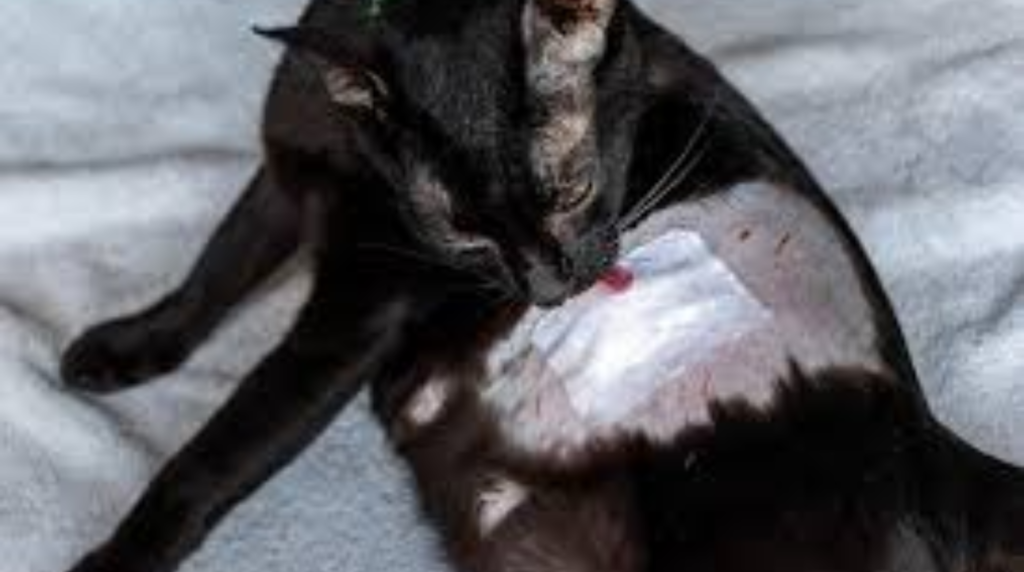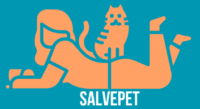Dog and Cat Population Control is a crucial issue for animal health and welfare. With the rising pet population, many challenges arise, including abandonment and overcrowding in shelters.
Addressing this problem is essential to ensure that all animals have a safe and loving home.
It is vital for dog and cat owners to understand the importance of responsible practices, such as spaying and neutering and conscious adoption.
Through effective initiatives, we can contribute to a better future where the overpopulation of pets is not a constant concern.
In this article, we will explore ten valuable tips that will help you actively participate in Dog and Cat Population Control. Join us in this mission and discover how you can make a difference.
Responsible Adoption

Responsible adoption is one of the most effective ways to control the population of dogs and cats.
Encouraging the adoption of shelter animals instead of purchasing from stores or breeders is an action that can make a significant difference.
Shelters are often filled with adorable animals in need of homes, and adoption not only helps reduce overpopulation but also offers a second chance to an animal in need.
By adopting, you not only save a life but also create space in shelters for more at-risk animals.
Furthermore, promoting responsible adoption involves educating the community about the responsibilities that come with pet ownership.
People need to understand that adopting a pet is a long-term commitment that requires love, care, and financial resources.
Campaigns highlighting successful adoption stories can inspire others to consider adoption, helping to create a positive cycle that benefits both animals and humans.
How Spaying and Neutering Work
Spaying and neutering are surgical procedures aimed at controlling the reproduction of dogs and cats. Neutering, also known as orchiectomy, is the procedure performed on males, which involves the removal of the testicles.
This procedure prevents sperm production and reduces hormone production, which can help decrease unwanted behaviors such as marking territory and aggression.
Spaying, or ovariohysterectomy, is the surgery performed on females, where the ovaries and often the uterus are removed.
This procedure eliminates the possibility of pregnancy and also reduces the risk of certain diseases, such as uterine infections and breast cancer.
Both procedures are performed under general anesthesia and are considered safe, with a very low complication rate.
After surgery, animals typically require a recovery period, during which it is important to monitor their health and avoid intense physical activities.
Spaying and neutering not only contribute to Dog and Cat Population Control but also promote the health and well-being of the animals, improving their quality of life in the long run.
Additionally, many veterinarians and animal welfare organizations offer affordable spaying and neutering programs, making it easier for pet owners to access these important procedures.
Education on Responsible Ownership
Promoting responsible ownership is fundamental to Dog and Cat Population Control. Education about the necessary care, responsibilities, and consequences of abandonment is one of the keys to combating animal overpopulation.
Through workshops, lectures, and social media campaigns, we can inform pet owners about the importance of providing proper care and ensuring their animals do not reproduce uncontrollably.
The more people know about what it means to be a responsible owner, the more likely they are to make informed decisions about pet ownership.
Moreover, education should extend to children, as they are the future of pet ownership. Teaching them from an early age about respect and care for animals can foster a new generation of responsible owners.
Schools can become valuable spaces to disseminate this information, incorporating animal welfare education into their curriculums. In this way, we cultivate a culture of responsibility and compassion towards our furry friends.
Partnerships with NGOs and Veterinarians

Working together with non-governmental organizations (NGOs) and veterinarians can enhance the impact of Dog and Cat Population Control initiatives.
NGOs often have experience in rescues and adoptions, and their collaboration can result in spaying, vaccination, and adoption campaigns that benefit the community.
Together, these entities can organize events to promote animal health and well-being, as well as mobilize volunteers to assist in activities.
The partnership between NGOs and veterinarians can also facilitate access to essential health services for animals.
Additionally, these collaborations can be an excellent opportunity to educate the public about the importance of Dog and Cat Population Control.
Through joint campaigns, we can reach more people and disseminate valuable information about responsible ownership, spaying, and adoption.
This type of community involvement not only improves the quality of life for animals but also strengthens the social fabric by uniting people around a common cause.
Awareness Campaigns
Organizing or participating in awareness campaigns is an excellent way to inform the public about the importance of Dog and Cat Population Control.
Utilizing social media, flyers, and community events to spread the message and encourage action can lead to a significant impact.
Well-crafted campaigns can help dispel myths about adoption and spaying, educating people about the benefits of such practices. Awareness is a crucial step toward changing behavior regarding pets.
An effective strategy is to share inspiring stories of successful adoptions and rescues that changed lives.
These narratives can touch people’s hearts and motivate them to take action. Furthermore, community events, such as adoption fairs and informative lectures, can raise awareness about the issue of animal overpopulation and present practical solutions.
With ongoing and collaborative efforts, it is possible to create an environment where responsible ownership and adoption become the norm.
Monitoring Populations
Monitoring the dog and cat population in your area is essential for identifying trends and needs. This monitoring can help local authorities implement effective policies and direct resources where they are most needed.
Utilizing demographic data and adoption statistics allows policymakers to better understand the local landscape and create strategies to address overpopulation.
The use of technologies, such as apps and online platforms, can facilitate data collection and community interaction.
Additionally, monitoring should include identifying areas with high rates of abandonment and overpopulation.
This can lead to the creation of targeted programs, such as mass spay neuter campaigns or adoption events in critical locations.
By focusing on the specific needs of different regions, we can maximize the impact of dog and cat population control initiatives and create a safer environment for animals.
Encouraging Pet Adoption
Creating programs that encourage the adoption of animals is an effective way to address overpopulation. Offering incentives, such as discounts on veterinary services, food, or accessories, can increase the adoption rate in shelters.
Often, people hesitate to adopt due to concerns about initial costs, so providing support can make all the difference. Adoption events that highlight these offers present an excellent opportunity to raise awareness and promote responsible adoption.
Furthermore, promoting adoption should be accompanied by information about what to expect when adopting a pet. Guidance on necessary care, socialization, and the adjustment of the new pet can help ensure that adoptions are successful.
By supporting new adopters with resources and helpful tips, we can enhance satisfaction and success in adoptions, contributing to the reduction of abandoned animal populations.
Supporting Rescue Programs
Offering support to rescue programs that work to rehabilitate and find homes for abandoned animals can have a significant impact. These programs often rely on donations and the work of dedicated volunteers, and their sustainability is vital for the health of the animal community.
If you cannot adopt, consider making a donation or volunteering. Helping spread awareness of their needs on social media is also an effective way to engage more people in the cause.
Moreover, collaboration with rescue programs can facilitate the organization of adoption events and awareness campaigns about overpopulation.
These events provide an excellent opportunity to showcase animals available for adoption and educate the public about the importance of dog and cat population control.
With adequate support, rescue programs can expand their efforts and help ensure that more animals find loving homes.
Creating Local Laws
Working with lawmakers to implement and enforce laws that promote population control is a vital strategy. Establishing laws that require pet sterilization and regulate irresponsible breeding can help reduce the number of abandoned dogs and cats.
These laws not only address overpopulation but also protect animals from mistreatment and ensure that breeding practices meet ethical standards. It is essential for the community to engage in this process, advocating for changes that benefit animals.
Additionally, the creation of laws should be accompanied by educational efforts to help people understand the importance of these regulations.
Campaigns that inform the public about the new laws and their rationale can generate support and community buy-in.
Collaborating with NGOs, veterinarians, and animal advocates can strengthen these efforts and create a unified movement for animal welfare.
Sharing Resources and Information

Finally, sharing resources and information about dog and cat population control can help mobilize the community.
Creating platforms where pet owners, veterinarians, and organizations can share tips, experiences, and helpful information is an effective way to promote responsible ownership.
Access to this information can empower people to make informed decisions about adoption and care for their pets, contributing to the reduction of abandoned animal populations.
Additionally, collaboration among different stakeholders, such as shelters, veterinarians, and community groups, can further enrich information sharing.
Organizing events and workshops that address topics like spaying neutering, responsible adoption, and pet care can facilitate knowledge exchange and build a support network. Together, we can create a more conscious and responsible community regarding animal welfare.
Conclusion
Dog and cat population control is a complex challenge, but with concrete actions and community collaboration, we can make a difference.
By adopting, spaying neutering, educating, and supporting programs that promote responsible ownership, each of us can contribute to a better future for animals.
Change begins with awareness and action, and it is our responsibility to care for our furry friends and ensure they have a safe and loving home.
Frequently Asked Questions
What is dog and cat population control?
Dog and cat population control refers to a set of actions and strategies aimed at managing and reducing the number of abandoned or stray animals.
This includes practices such as spaying neutering, responsible adoption, community education on responsible ownership, and implementing laws that protect animals and limit indiscriminate breeding.
Why is spaying important?
Spaying is important because it helps reduce the population of dogs and cats by preventing the birth of unwanted puppies and kittens that may be abandoned or mistreated.
Additionally, spaying can improve the health of animals, reducing the risk of certain diseases and problematic behaviors such as aggression and marking territory.
How does the responsible adoption process work?
The responsible adoption process involves carefully selecting a pet that fits the lifestyle and circumstances of the adopter. This includes assessing the needs of the animal, checking the shelter’s background, and preparing the home to welcome the new family member.
Responsible adoption also entails a long-term commitment to the care and health of the animal.
What are the benefits of sterilization?
The benefits of sterilization include preventing unwanted pregnancies, reducing the risk of certain diseases such as breast cancer and uterine infections, and decreasing unwanted behaviors like the urge to escape to find a mate.
Furthermore, sterilization helps control animal populations, contributing to animal welfare.
How do awareness campaigns help?
Awareness campaigns help by educating the public about the importance of dog and cat population control, spaying neutering, and responsible ownership.
By informing people about the consequences of abandonment and the benefits of adoption, these campaigns can encourage behavior change and increase spaying rates, resulting in fewer animals on the streets.
What are low-cost spay neuter programs?
Low-cost spay neuter programs are initiatives offered by NGOs, shelters, and veterinary clinics aimed at facilitating access to pet sterilization.
These programs provide spaying neutering services at reduced prices or even for free, enabling more owners to sterilize their animals, thereby contributing to population control.
What laws exist to protect animals?
Several laws aim to protect animals and control breeding, including regulations on responsible breeding, prohibiting abandonment, and rules that require the spaying neutering of adopted animals.
These laws are fundamental to ensuring animal welfare and reducing the number of abandoned dogs and cats on the streets.
How can social media help with population control?
Social media can assist with population control by spreading information about adoption, spaying neutering, and animal care.
It also allows shelters and NGOs to promote campaigns, share success stories of adoptions, and connect potential adopters with available pets, increasing the visibility of animals in need of homes.
What are the challenges of population control?
The challenges of population control include cultural resistance to spaying neutering, lack of financial resources for spay neuter and adoption programs, and difficulty reaching underserved communities.
Moreover, misinformation about the importance of population control can hinder efforts to reduce the number of abandoned animals.
How can the community get involved in population control?
The community can get involved in population control by participating in awareness campaigns, supporting shelters and NGOs, promoting responsible adoption, and organizing spay neuter initiatives together.
Additionally, mobilizing around laws that protect animals and educating others about responsible ownership are also effective ways to contribute to animal welfare.
